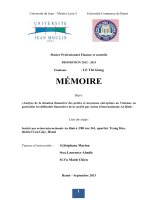- Trang chủ >>
- Y - Dược >>
- Sản phụ khoa
hormonal contraception adolescent vietnam - en
Bạn đang xem bản rút gọn của tài liệu. Xem và tải ngay bản đầy đủ của tài liệu tại đây (1.03 MB, 39 trang )
Hormonal Contraception in Adolescents
Hormonal Contraception in Adolescents
Rebecca Jackson, MD
Associate Professor
Obstetrics, Gynecology &
Reproductive Sciences and
Epidemiology & Biostatistics
San Francisco General Hospital
Preview
Why contraception in teens is important
Hormonal methods and issues specific to
adolescents
Acknowledgement
Slides adapted with permission from
presentations by Jody Steinauer, MD
and Tina Raine, MD
Sex* by Age (US)
Mosher WD, Chandra A, Jones J. Sexual behavior and selected health measures: Men and
women 15–44 years of age, United States, 2002 . Advance data from vital and health
statistics; no 362. Hyattsville, MD: National Center for Health Statistics. 2005.
*Heterosexual vaginal intercourse
6.3 Million U.S. Pregnancies
52 %
Intended
25 % Unintended
Despite method use
23 % Unintended
No method used
Henshaw, Family Planning Perspectives, 1998
Half of
unintended
pregnancies
end in
abortion
Teen Pregnancy
The majority (78%) of teen pregnancies
are unintended.
About 45% of teen pregnancies end in
abortions; roughly 250,000 abortions per
year.
Half of women with an unintended
pregnancy report using a contraceptive
method in the month that they conceived
Henshaw et al. Unintended Pregnancy in the United Sates. Fam Plann Perspect. 1998; 30:4-29.
Consequences of adolescent
pregnancy
Increased morbidity/mortality during
pregnancy
Unsafe abortion
Sexually transmitted infections
Social and personal consequences of
early pregnancy
Poverty
Unable to complete education
26% of females used no contraception
at first sex
Contraceptive use at first sex is more
likely for teens who are older at first sex
Teens who do not use contraception at
first sex are much more likely to have a
birth before reaching age 20
Teen Contraceptive Use – First Sex
Abma et al. Teenagers in the United States: Sexual activity, contraceptive use, and childbearing, 2002.
National Center for Health Statistics. Vital Health Stat 23(24). 2004.
Teens - Contraception Used
At Last Sex
Source: 1995 National Survey of
Family Growth
Hormonal Methods
Combined Estrogen & Progesterone
OCPs
Skin patch, Vaginal Ring,
Injectables
Progesterone-only
Injectable (DMPA)
Implant (Implanon)
IUD (Mirena)
Emergency contraception
Contraception for teens
Can safely use all methods (except
sterilization)
Need to make choice themselves
Side effects more problematic to teens
Often don’t initiate or fill the prescription
(consider quick start)
Starting a Teen on
Hormonal Contraceptives
Take a medical history (Illnesses, Migraines )
Assess weight and blood pressure
Pelvic exam not necessary:
Screen for STIs… using urine if no problems
Determine when a Pap test is needed
Provide education, counseling, and support
Patient preference
Past method use and problems
Offer condoms
Effectiveness of Methods
Failures per 100 women in first year of use
Method Typical Use
Correct &
Consistent Use
Always Very Effective
Implants 0.1 0.1
Injectables 0.3 0.3
IUD 0.8 0.6
Very effective with
consistent use
Combined OCPs 6-8 0.1
Only somewhat effective as
commonly used
Effective when used correctly
Male Condoms 14 3
Diaphram 20 6
Spermicides 26 6
Fertility awareness 20 1-9
Withdrawal 19 4
No method 85 85
WHO Medical Eligibility
Guidelines
Classification
1 Use method in any circumstances, no
restriction
2 Generally use the method,
advantages outweigh risks
3 Use only if no other method available,
risks outweigh advantages
4 Method not to be used, unacceptable
health risk
Improving access to quality care in family planning. Medical eligibility criteria for
initiating and continuing use of contraceptive methods. Second Edition. WHO, 2000.
Combined Hormonal Contraception
Category 4 Contraindications
Category 4 Contraindications
Vascular or heart disease - stroke, MI, diabetic, severe
HTN (>160/100) or Multiple CVD RF
Smoking (>15 cigarettes/day) and Age >35
Migraine with Aura or Age>35 and migraines
Active liver disease or tumor
History of DVT/PE or known thrombogenic mutation
Major surgery with prolonged immobilization
Breast feeding < 6 weeks postpartum
Current breast cancer
/>(Teens may have these)
Breast feeding: 6 wks-6 months; past breast cancer
Postpartum <21 days
Smoking (<15 cigarettes/day) and Age >35
Elevated BP (140-159/90-99) or controlled HTN
History of HTN where BP can’t be evaluated
Multiple risk factors for CVD
Liver or gall bladder disease or OCP-related cholestasis
Drugs that affect liver enzymes (Rifampin, seizure meds)
Combined Hormonal Contraception
Category 3 Contraindications
/>(Teens may have these)
OCP “Pros” for Teens
Temporally unrelated to intercourse!
Regulates periods
Decreases menstrual cramping and flow
Improves acne
Improves hirsutism
Reduces risk of ovarian and endometrial
cancer
Decreases benign breast neoplasms
OCP “Cons” for Teens
Temporally unrelated to intercourse!
Requires a daily regimen
No place to keep them
No STD protection
Fear of side effects or “danger”:
“Will I be able to have children later?”
“Will it make me gain weight?”
Daily: Extended Use Pills
May increase efficacy and
adherence
Up to 25% of women have follicle
ready to ovulate by day 7 of
placebo week!
So if the start of the new pack
is delayed, they are at high risk of
pregnancy!
Continuous use
2 months/3 months, then a week off
Weekly: Transdermal
Contraceptive System “Patch”
Ortho Evra
™
20mcg EE & 150mcg
norelgestomin daily
One patch each week
for 3 weeks
Very effective! Failure
rate 0.9%
Women are more
compliant than with pill!
(88% v. 78%)
Audet, JAMA, 2001
“Patch” Issues for teens
Easily placed and removed but hard
to hide
Few side effects – comparable to pills
except
20% skin irritation – 2% stopped
method
More breast discomfort in first 2
cycles (19%) than pills (6%)
More spotting (20%) than pills in first
2 cycles
3% detached
“Patch” and thrombosis
Increased risk thrombosis?
Numerator and denominator are unclear
New user bias
Serum levels slightly higher than 35 mcg
pill
Increase with each week, reaches
steady state
Case-control study – VTE patch v. 35 mcg pill
OR 1.1 (95% CI 0.7-1.8)
Risk of thrombosis may or may not be higher
than other combined methods
Jick et al. Contraception 2006.
Monthly: Contraceptive
Vaginal Ring
Nuvaring™
15 mcg EE & 120mcg
desogestrel daily
One ring each month
Ring in vagina for 3 weeks
Ring removed for one week
Constant, low hormone
levels
Very effective!
Failure rate 1.2%
Miller, Ob Gyn, 2005
“Ring” Issues for teens
Easily placed and removed (and hidden) but
need to be comfortable placing in vagina
Most women and men don’t notice during sex
High acceptability and compliance
Few side effects – comparable to pills except
Less spotting 5% (significantly less in first
month)
1% stop method because of discharge
2.5% stop method because of discomfort
Dieben, Ob Gyn, 2002
Headaches and
Combined Hormonal Contraception
Initiate Continue
Non migrainous (mild/severe)
1
1
2
2
Migraine
(i) no focal neurologic symptoms
Age < 35
Age < 35
2
2
3
3
Age > 35
Age > 35
3
3
4
4
(ii) focal neurologic symptoms
(ii) focal neurologic symptoms
4
4
4
4
(at any age)
(at any age)
/>
Prescribing combined methods
in Women with Migraines
Lower & consistent estrogen levels with
ring
Consider 20 or 25 mcg pills
Consider eliminating the placebo week
in women who have migraines
triggered by withdrawal of estrogen
Regular follow-up in 1-3 months after
initial Rx
Need to discontinue method if
headaches worsen









